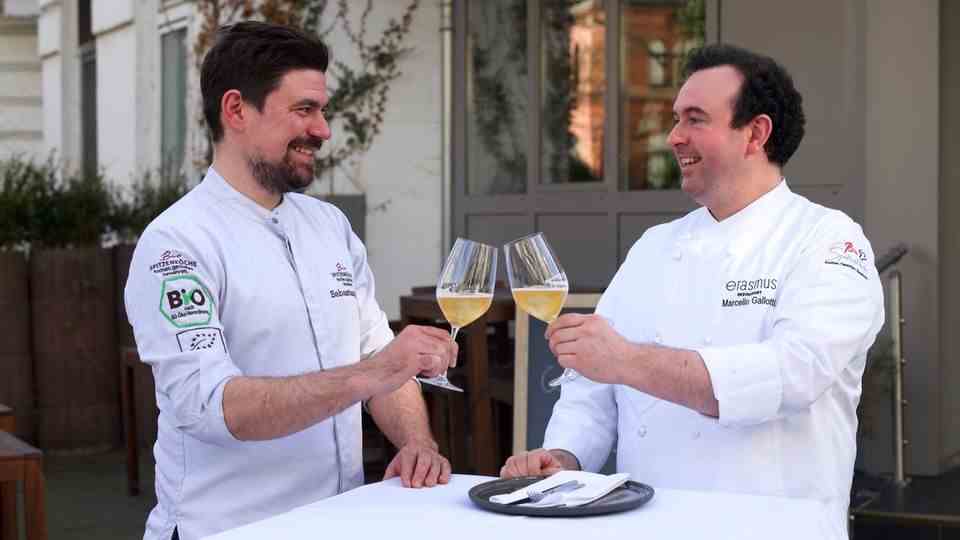sustainability
Guide Michelin: Why the Green Star is a stroke of luck for gastronomy
With the Green Star, the Michelin Guide pays tribute to social development towards sustainable cuisine.
© Vladimir Gerdo / Picture Alliance
With the introduction of the Green Star three years ago, the Michelin Guide caused a surprise and drew criticism. But despite the prejudices, the sustainability star has established itself – because it has radiance.
He works under the guise of anonymity and keeps secrets: the Michelin Guide. For almost a century, the restaurant guide has been the supreme judge of where food tastes good and where it doesn’t. But what once made him great is causing him increasing problems. The headwind from revolting chefs is getting louder. The concept of the restaurant guide is no longer up-to-date and needs to be adjusted. Then in 2020 the bang. The Guide Michelin dared to take the step forward and introduced “The Green Leaf”. An award for particularly sustainable restaurants. However, this award was not accepted by the restaurateurs with a kiss on the hand – not even by the honored ones. The insinuation quickly spread that the restaurant guide with the Green Star was only doing greenwashing, using it as a fig leaf to cover up its opaque test machinations.
This year the Green Star was awarded for the third time. According to the Michelin Guide, restaurants were honored that stand out through specific measures such as the “use of regional and seasonal products, consideration of biological and ecological aspects, the avoidance of long transport routes, species-appropriate animal husbandry, energy saving and waste avoidance as well as raising awareness and training employees on the subject Sustainability” have particularly highlighted. A total of 61 restaurants are now allowed to hang the plaque on their doors. But what is this even worth?
The Michelin Guide is many things, it is not infallible
Right in the premiere year of the new star, criticism rained down. At the time, Billy Wagner, whose “Nobelhart & Schmutzig” had been awarded just such a sustainability star, criticized how the Michelin Guide actually wanted to know how sustainable the work was really done in its Berliner. He asked: “Couldn’t it be that I’m just telling loudmouths how great sustainable we are? Have you checked it out? Don’t you just reward us for green marketing?”
At that time, Wagner put his finger in a wound that had long since become infected. He was not the first star chef to rebel against the structures of the Michelin Guide, which were encrusted with a lack of transparency. It had long since become a thorn in the side of others, too, that the restaurant guide absolutely refuses to let anyone look at their cards. One of the biggest critics is certainly the Korean Ei Yungwo. In 2019 he had explicitly asked not to be listed. His wish was denied. “I have filed a lawsuit against the Michelin Guide’s behavior in listing restaurants against their will and without clearly defined criteria,” he said. And: “Listing my restaurant Eo in your corrupt book is an insult.”
The Michelin Guide is many things, it is not infallible. Some constants, which the restaurant guide has stubbornly dragged along for decades, are rightly criticized again and again. But with the Green Star, the restaurant guide has opened the door a crack. With the new category, the restaurant guide pays tribute to the fact that the culinary world is no longer just about tasting and not tasting. And he uses the power he still has to not only support this development, but to drive it forward.
Pioneers of sustainable cuisine
Two who have been awarded the sustainability star for the third time are Sebastian Junge from the “Wolfs Junge” restaurant in Hamburg and Marcello Gallotti from the “erasmus” restaurant in Karlsruhe. The two count themselves among the spearheads when it comes to product awareness in German gastronomy – and not just since the Green Star has existed. Their restaurants are among the few that are also organically certified. With the cooking association BIOSspitzenküche, they are committed to ecologically and fairly produced food.

Works for them: Sebastian Junge (left) and Marcello Gallotti were awarded a Green Star by the Michelin Guide for the third time in 2022.
© BLE/Bio top chefs
Neither of them fully agree with the non-transparent way the restaurant guide works, but they do agree with the Green Star itself. “It’s not a perfect system, but I’m very grateful,” said Gallotti. He was already focusing on sustainability before it was hip, let alone part of the mainstream. When he started, he says, he was treated like an alien. His restaurant has been organically certified since 2006 and is now established as such. And yet the award with the Green Star made an enormous difference. His sales have increased by 30 percent.
An award from the Michelin Guide is not just an expression of recognition and appreciation of the gastronomic work. It has a signal effect. “The Green Star is a great incentive,” said Junge. With more attention being paid to sustainable cuisine, its attractiveness is also growing. For the restaurateurs themselves, but also for the guests. A win-win situation.
Source: Guide Michelin 1, Guide Michelin 2, BIOS top chefs




